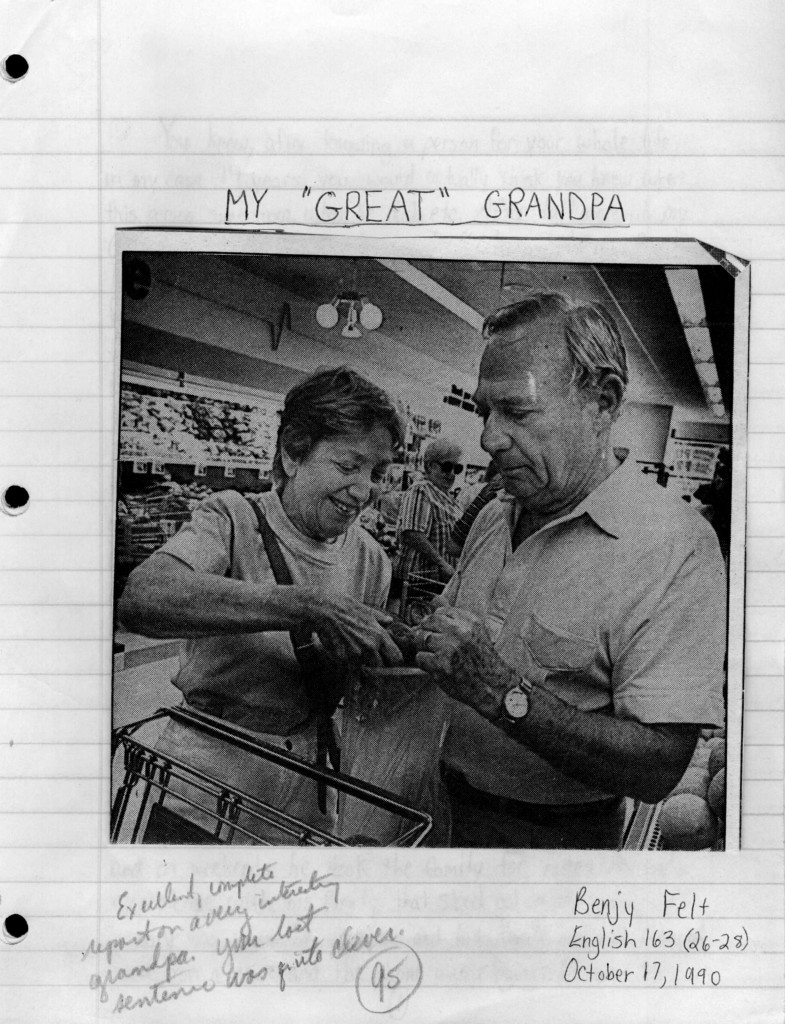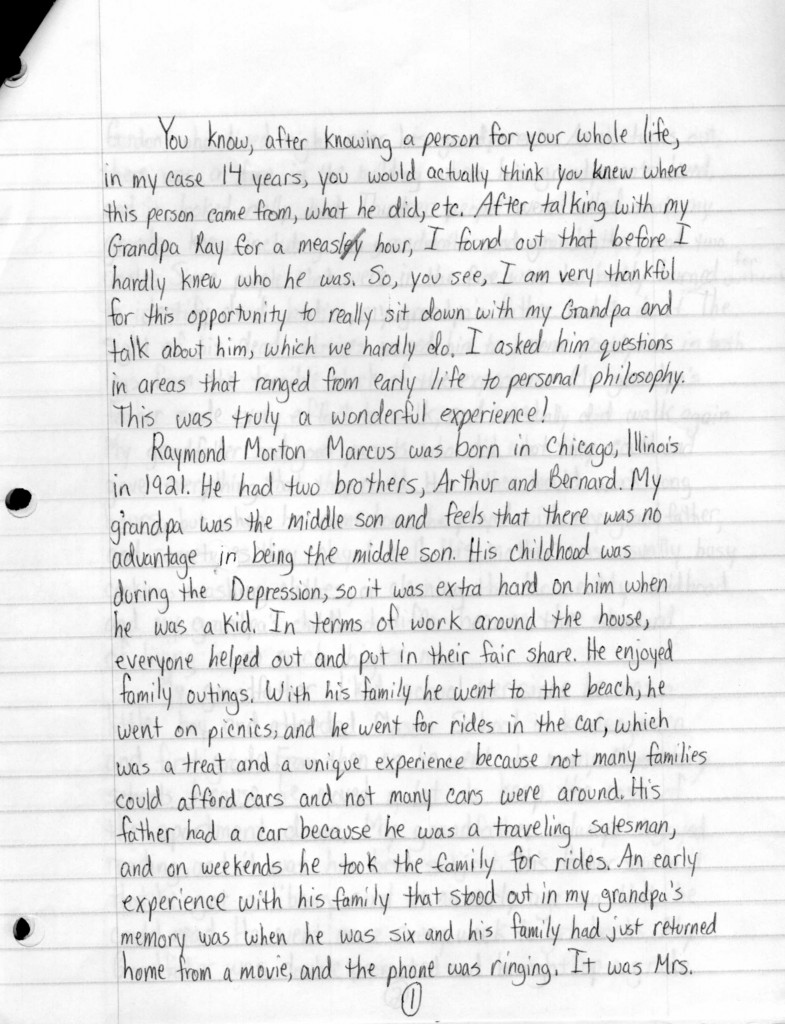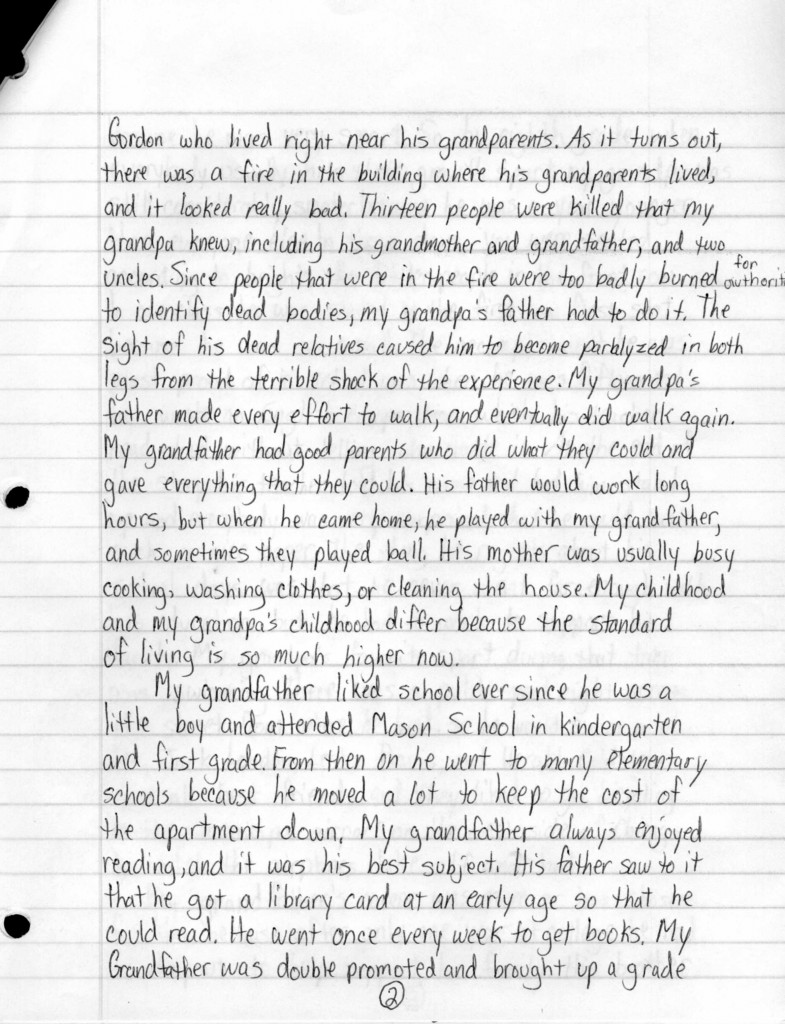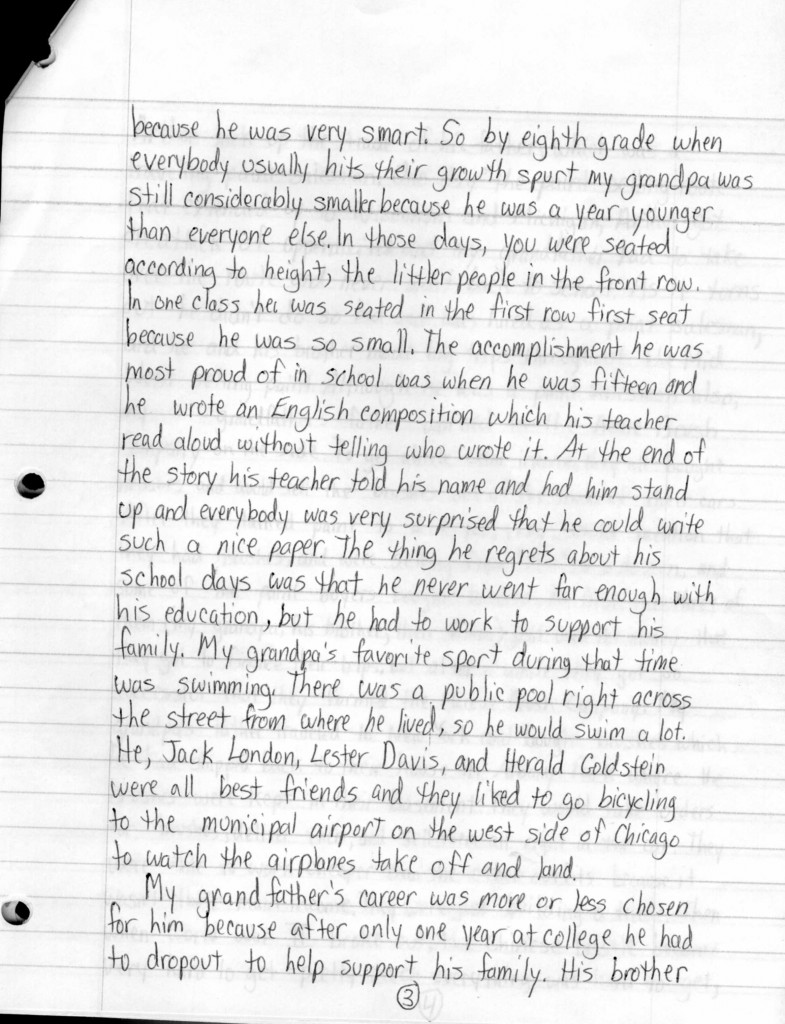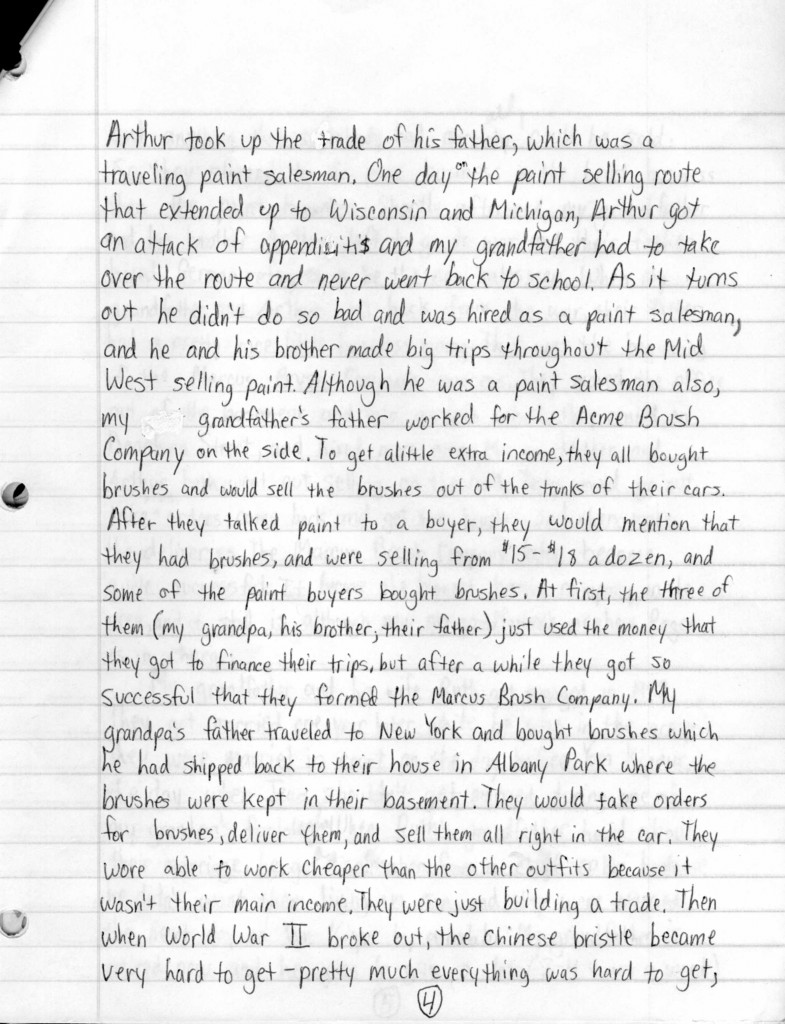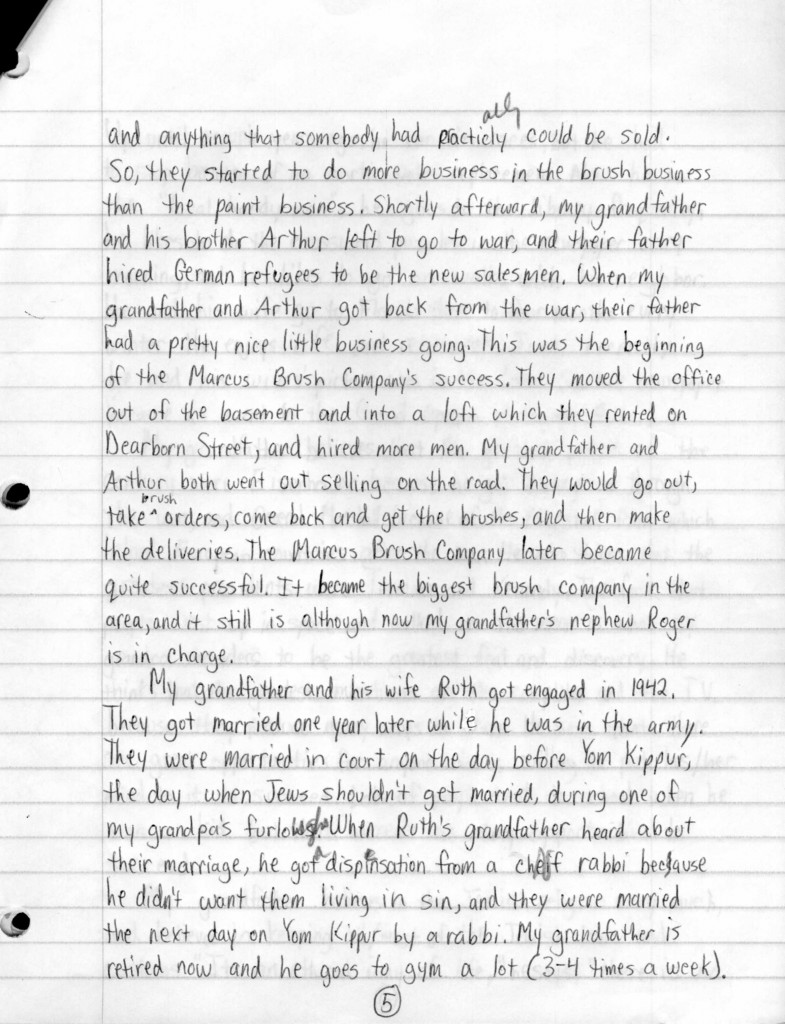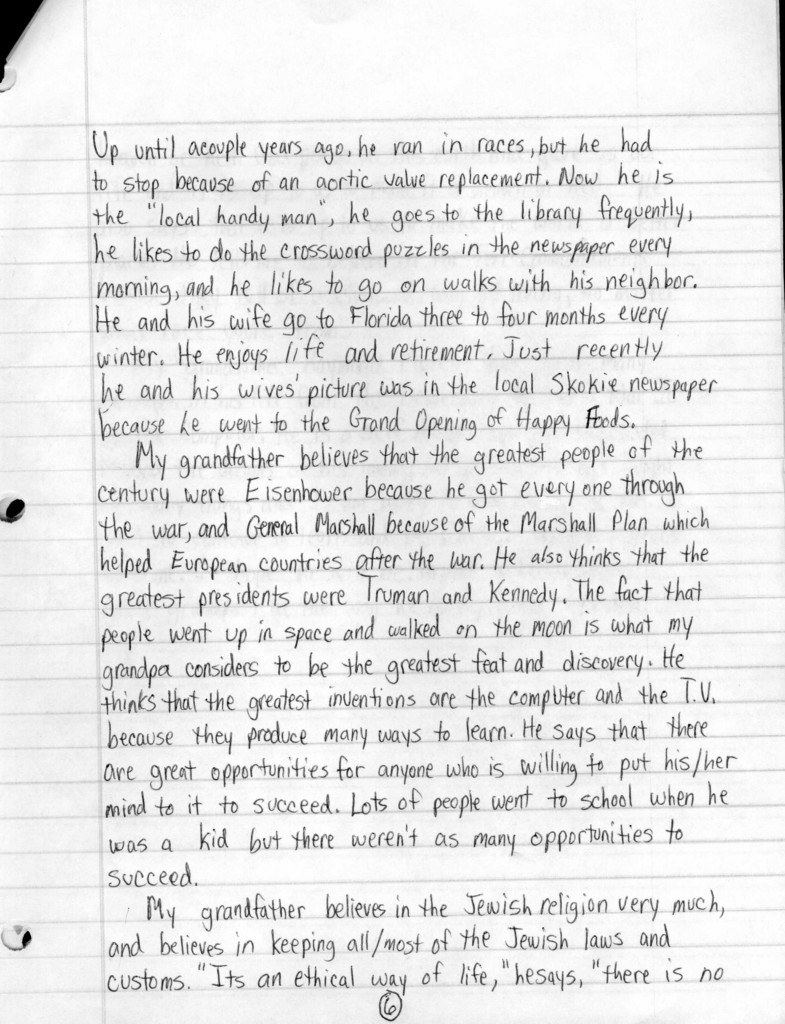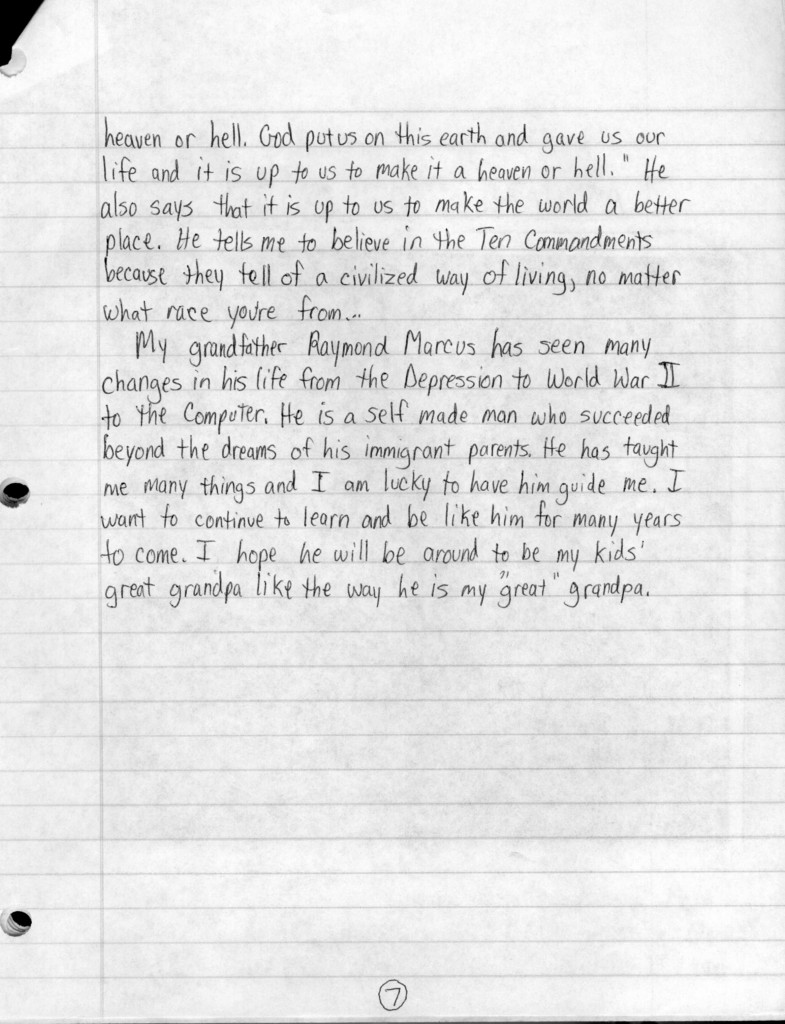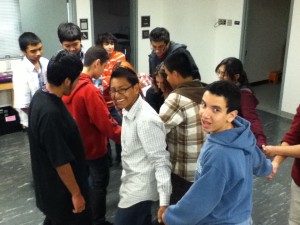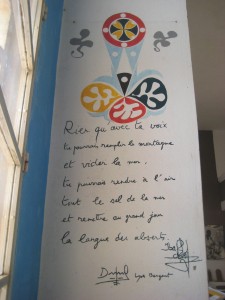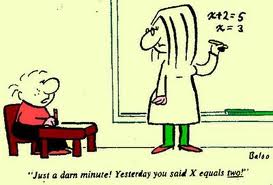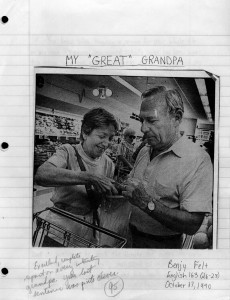 In 1990, when my older brother Benjy was 14 years old, he interviewed our Grandpa Ray and wrote a short essay about his life. Last year my mom unearthed it, squirreled away in some nook of Benjy’s bedroom for more than two decades, and Benjy read parts aloud at the unveiling of Grandpa’s headstone in May 2011. Earlier this morning, Dad scanned these seven pages. I’m grateful for this essay’s multiple windows into history. Not only does it depict the Depression and post-WWII eras that marked Grandpa’s life, but it also reminds us of Benjy’s world then — a world where he, as a high school freshman, had to laboriously and neatly handwrite multi-paged essays; a world where spellcheck wasn’t built into the platform upon which he was writing. (How could it be? It was a piece of ruled paper!)
In 1990, when my older brother Benjy was 14 years old, he interviewed our Grandpa Ray and wrote a short essay about his life. Last year my mom unearthed it, squirreled away in some nook of Benjy’s bedroom for more than two decades, and Benjy read parts aloud at the unveiling of Grandpa’s headstone in May 2011. Earlier this morning, Dad scanned these seven pages. I’m grateful for this essay’s multiple windows into history. Not only does it depict the Depression and post-WWII eras that marked Grandpa’s life, but it also reminds us of Benjy’s world then — a world where he, as a high school freshman, had to laboriously and neatly handwrite multi-paged essays; a world where spellcheck wasn’t built into the platform upon which he was writing. (How could it be? It was a piece of ruled paper!)
This morning I told my young cousins, a 10-year-old and a 6-year-old who had awoken at 6:30 am in order to jump on my head, that I knew we were watching the NEW Scooby Doo (as opposed to the classic Scooby Doo) because Velma didn’t consult laptops back in my day — they hadn’t been invented yet. Last night, I told them a bedtime story that my Grandma Elly had imagined and related when my sister Sarah and I were little girls. All I could recall was the premise — there once were three Hawaiian sisters named Oola, Moola, and Leela — and I proceeded from there, making up as I went along and regularly asking the girls to fill in blanks. What do you think happened next? I would ask. Molly, a precocious first-grader, contributed a storyline in which baby Leela continued fishing while her older sisters built up the fire for cooking. In addition to netting fish after giant fish, she also attracted a shark! Leela had to bonk him on the head with her little fishing pole to keep him back. When the sisters returned home with fish and tales, no one believed Leela’s story. Personally, that’s where I thought Molly would leave it. But she threw in a detail: “Here’s a video!” Leela said. “See!” And she showed the footage to her parents.
I smiled. When we were Molly’s and Sadie’s ages, Sarah and I never would have thought to suggest such corroborating evidence — videography wasn’t ubiquitous back then. Moreover, Oola, Moola, and Leela were indigenous peasant girls who lived in Hawaii. I’m not sure if Sarah and I would have granted them the technology of even the fork… I also thought that Oola, Moola, and Leela were from the past. I don’t know if Grandma stipulated that, or if I’d assumed that since their life seemed so tranquil and tied to the earth, or if Grandma’s age and the classic quality of her warm voice (I loved my grandma’s voice) led me to associate all of her stories with days of yore.
It doesn’t matter. It’s interesting but it doesn’t matter. What matters is love and family and creativity and storytelling. I’ve always mourned the fact that my grandma, who had been an elementary school teacher and children’s librarian, never got to realize her aspiration of publishing children’s books. I dreamed of getting them published posthumously — I wanted to do her that service. But I realize now that both the stories our grandparents lived and the stories they told live on. I thank my brother and sister, our parents, and the rest of our family for facilitating that beautiful truth.
NOTE: As I scrutinize the date of this essay, I realize the context in which Benjy wrote it. Grandpa Justin had passed away unexpectedly, the result of a stroke tragically mistreated, in January of 1990. Grandma Elly, who’d been struggling against breast cancer for years, moved in with us immediately after. Her older sister Pearl, whose voice to this day sounds just like my grandma’s and moves me nearly to tears every time I talk to her on the phone, also took up residency in our house. But despite these efforts and my grandmother’s powerful will, we lost her a few months later, in June of 1990. This essay’s date: October 1990.
After Dad’s parents could no longer testify, Benjy made sure that we heard from Mom’s.
NOTE: Benjy got his wish — partially. His older daughter, Lyla, was a baby when Grandpa Ray died. Benjy’s younger daughter, Violet, never got to meet her great-grandpa. But maybe someday, if we keep telling these stories, she will.
- Stories about my maternal grandparents, Raymond Marcus and Ruth Feldman Marcus
- Interviews with Ruth Feldman Marcus, Barbara Marcus Felt, and a talk with Raymond Marcus
- Eulogies of Raymond Marcus
- WWII accounts of Raymond Marcus, Arthur Marcus, Bernard Marcus, and Charles Milner
- The 90th birthday of Ruth Feldman Marcus + Hanukkah celebrations
- Stories about my paternal grandparents, Justin and Eleanor Felt


